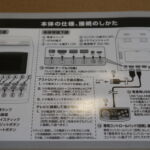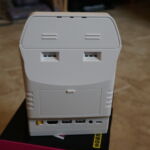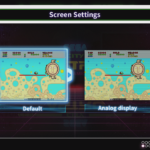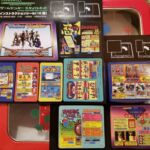

Lost Sega arcade classics born anew in cute, $130 Astro City Mini [Updated]
source link: https://arstechnica.com/gaming/2020/12/lost-sega-arcade-classics-born-anew-in-cute-130-astro-city-mini/
Go to the source link to view the article. You can view the picture content, updated content and better typesetting reading experience. If the link is broken, please click the button below to view the snapshot at that time.

Rise from your grave —
Lost Sega arcade classics born anew in cute, $130 Astro City Mini [Updated]
Fun, clicky buttons, Sega rarities, and solid emulation—albeit with some issues.
Sam Machkovech - 12/21/2020, 11:06 PM

If you want to play Sega's classic Genesis games, that's easy to do in the modern era. Grab a Sega Genesis Mini or pick through an a la carte catalog of classics like Sonic the Hedgehog, Streets of Rage, and Gunstar Heroes on Steam, smartphones, and consoles. (There are overkill options, as well.) But Sega's other classic libraries can be much trickier to access legitimately, which is one reason I pounced on an official product that went on sale exclusively in Japan earlier this year: the Astro City Mini.
This miniaturized arcade cabinet is modeled after the popular modular arcade cabinet of the same name, one that you'll find at any Japanese arcade worth its weight in yen, and it comes packed with 37 original Sega arcade games—some of which have never been ported to consoles or PCs. At an Amazon JP cost of ¥13,511, or $130, that's a somewhat steep per-game cost compared to other recent miniaturized retro consoles—though it also includes a built-in screen, arcade-caliber controls, and HDMI-out capabilities.
My hardware arrived late last week, and in great news, it's a perfect fit for the primary reason I bought it—as a new centerpiece for my retro-mini console collection, to be positioned on my toys-and-dolls shelves. I am particularly fond of the Astro City cabinet's design language, and Sega's plastic reproduction gets everything right. Stickers are neatly and evenly placed, all with bold, accurate colors. The body's off-white shade is accurate, and it works as a great foil for the primarily green color motif for other elements. And even with the power off, the sheer act of mucking around with the joystick and buttons is an utter delight, thanks to responsive, loud clicking.
It sure looks the part
-
The Astro City Mini fresh out of the box, so the screen protector film is still on.
-
If you can't read Japanese, let me help: The Astro City Mini comes with 37 pre-installed games.
-
More info on the sides.
-
The flap that greets you when you begin opening the box.
-
Instructions—and a sales pitch to buy licensed Astro City Mini-compatible controllers, whether you want to add a second player or just have a handheld controller while using the system in HDMI-out mode.
-
Stick and buttons—all unlabeled, and the same goes for the P1 and P2 buttons.
-
These are very clicky buttons, and they feel very satisfying as miniaturized, 24mm diameter buttons.
-
Square grid for the equally clicky joystick. It's responsive as hell in the Astro City Mini's shmups.
-
"High - resolution graphics and stereo - of - the - art sound double your playing enjoyment!" [sic].
-
The marquee lights up when powered on.
-
Side view.
-
None of these plastic tabs can be fiddled with to open the system; your only option is a series of six screws on the bottom, covered by rubber feet.
-
HDMI-out, controller ports, and micro-USB for power. "Phone" means headphone-out.
Thankfully, it's a competent piece of hardware with the power on as well, though with many of the caveats you might expect from an emulation box full of pre-installed games.
I'll start with the worst news: the cabinet has enough space to support a panel as large as 4.625 inches diagonal, in a space befitting the arcade era's typical 4:3 screen ratio, but Sega has opted for a smaller 16:9 LCD panel just shy of 4 inches... and no game in the collection uses that full space. Instead, everything is, at minimum, cropped to 3.375 inches, with either black bars or an optional wallpaper design filling in the rest of the screen.
AdvertisementBlame it on reducing the system's cost, or on how hard it might have been to source a bigger 4:3 LCD panel during a pandemic, but I can't help but wish Sega had offered a pricier, larger 4:3 screen option for fans who wanted it. Horizontal-orientation games are still playable enough with a slightly smaller screen, but the vertical orientation of classics like Gain Ground and Scramble Spirits means the screen has to shrink even further to 2.5" of diagonal screen space, rendering those games nigh unplayable on the included screen.
Thankfully, Astro City Mini owners can connect the system to their HDMI-capable screen of choice at 720p resolution, and this works well enough. You'll have to manage a series of cords (one for power, one for HDMI-out) if you want to use the built-in joystick and buttons to control the system this way in your living room, and I wouldn't blame you for doing so. For nearly every game in the collection, input lag is nil, and the clickiness of this control suite matches its responsiveness well. Quite honestly, I didn't expect horizontal shmup classics like Fantasy Zone and Cotton to feel so awesome (though if you care, know that the joystick is set up with a square gate, not octagonal).
The system includes two USB Type-A ports for additional controllers, for players 1 and 2, but sadly, as of press time, these only appear to work with Sega's brand-new, licensed Astro City Mini controllers. I didn't order any of these, hoping that perhaps my spare Sega Genesis Mini controllers or Xbox One gamepads would work, but ACM applies a restrictive flag check to its USB ports (even though the new, licensed controllers in question appear to offer Xinput options when connected to PCs). With a number of two-player classics in here, I could see myself ponying up for a compatible, Japan-exclusive gamepad before long.
Hold me closer, Shadow Dancer
Here's the list of games in chronological order:
- Flicky
- Sega Ninja
- My Hero
- Space Harrier
- Fantasy Zone
- Wonder Boy
- Quartet 2
- Alex Kidd: The Lost Stars (with Stella)
- Alien Syndrome
- Wonder Boy in Monster Land
- Shinobi
- Sonic Boom
- Altered Beast
- Scramble Spirits
- Wonder Boy III: Monster Lair
- Gain Ground
- Crack Down
- Golden Axe
- Cyber Police ESWAT
- Shadow Dancer
- Alien Storm
- Columns
- Bonanza Bros.
- Columns II
- Thunder Force AC
- Rad Mobile
- Cotton
- Arabian Fight
- Golden Axe: Revenge of Death Adder
- Puyo Puyo
- Dark Edge
- Puzzle & Action: Tant-R
- Virtua Fighter
- Stack Columns
- Puzzle & Action: Ichidant-R
- Puyo Puyo 2
- Dottori Kun (Dot Race)
-
Ars Technica's Aurich Lawson shows how well the ACM's small controls scale to grown-up hands while playing Golden Axe: Revenge of Death Adder. Lawson has opted not to turn on the "wallpaper" function (keep scrolling for more on that).
-
Powered on, posing on my kitchen countertop.
-
This is a 16:9 panel, so how are vertically oriented (aka TATE) games like Gain Ground going to work?
-
As you can see, the built-in "wallpaper" function doesn't mask how severe the cropping is here.
-
Gain Ground, but lose visibility.
-
The startup booting image.
-
The rest of this gallery is captured via its HDMI-out function, which feeds 720p video to any screen of your choice. And look! English!
-
That makes navigating the 37-strong game selection much easier.
-
Settings time. Not a ton to pick from here.
-
You cannot change the ratio to, say, stretch images beyond their original aspect ratios. Instead, you get a surprisingly weak scanline effect, far below the grade of Sega's official Genesis Mini.
-
Pick a background wallpaper to fill in black bars on the sides of every 4:3 game, or fake like Aurich Lawson and choose none of them.
-
Before starting any game, you get a brief explainer, simple control instructions, and an option to pick a save state.
-
Press the "coin" and "P1" buttons at the same time within a game to bring up a system menu, which includes two save-state slots.
-
The collection's 37th game is the one that came pre-installed in old Sega arcade boards.
-
Virtua Fighter 1's graphics are emulated quite well—at an apparently higher pixel resolution than the arcade original—but this comes at a cost of the system's most glaring input lag issues.
-
The resolutions for these games are all over the map, and without integer scaling or a highly processed pixel-scaling system, you're going to get some noticeable variance in pixel sizes if you look closely enough.
-
Not to mention horizontal shimmer, which a lot of this system's games suffer from.
-
Wacky pseudo-3D fighting game Dark Edge has been preserved in this collection. I'm glad to see it as a relic of Sega's past, but not because I want to play it.
-
Altered Beast is a notorious quarter muncher of an awkward beat-'em-up, but it can still be fun.
If many of those sound unfamiliar or new to you, that makes sense, as many were never produced for American arcades—and none of these include English-specific ports. Sega built some of these games for international sales, including classics like Fantasy Zone and Space Harrier, so they're already full of English text, while the plot of games like Wonder Boy in Monster Land and Arabian Fight and the instructions in mini-game collections like Puzzle & Action are made up entirely of Japanese text.
AdvertisementUltimately, these are arcade games, meant to be instantly playable after inserting a quarter, so don't fret too hard about the language barrier. Instead, the issue often boils down to some of Sega's arcade fare paling compared to the hits that did hit American arcades, or even home consoles. In particular, the pseudo-3D tricks in Arabian Fight and Dark Edge haven't aged very well, and their underlying games are curios, not must-play fare.
Still, for the most part, the issues boil down to mild visual artifacts like a lack of proper integer scaling, which often leads to horizontal pixel "shimmer" (where pixels are constantly reshaping to fit into an awkwardly upscaled resolution). The built-in "scanline" effect doesn't fix this issue in the slightest, and it scales pretty badly to the system's 720p resolution, so I advise not using it. And in the case of Virtua Fighter, the only "Model 1" game ported to this collection, the 3D emulation includes a wicked amount of input lag—so much so that I recommend sticking with a home computer emulator like MAME instead of this edition, in spite of its handsome pixel upscaling and otherwise solid emulation. Frame-perfect button taps are crucial in Sega's classic 3D fighter, and you won't get those here.At least the other games feel mighty responsive, as played with the built-in control suite, and I've enjoyed having such a selection of Sega classics served on an emulation platter within this attractive kit. (Cotton, Death Adder, and Rad Mobile, three of the collection's never-ported-to-USA games, have all delighted me for hours already thus far.) I wish the hardware included a few more tweaks, particularly a way to adjust screen brightness and speaker volume mid-game instead of having to quit to a system menu, and the built-in chiptune melody that plays in the system menu borders on criminal in terms of annoyance. Also, if you're an arcade-tweaking diehard, you'll hate the lack of dip switch settings (which let arcade operators adjust game difficulty as they saw fit for their customers).
But a bright, color-accurate screen, a great control system, and a handy "save state" option for every game ultimately make this an above-and-beyond mini-arcade system—certainly better than what we got from a similar Neo Geo product two years ago. I could imagine this being even better with homebrew software mods or, if you wanna go crazy, a full unscrew-and-replace mod for its screen, but for now, Sega definitely delivered something worth $130 shipped to the United States.(In my experience, Amazon JP has made international buying and shipping a breeze, including a streamlined customs process to the USA.)
And who knows—maybe its success will kick Sega's butt into putting out collections we've been begging for, whether they're arcade racing collections ("Daytooooonaaaaaa") or a freaking Sega Saturn mini.Update, 4:15 p.m.: Shortly after this article went live, an additional package arrived packed with extra decorative accessories: a raised platform, an arcade-style stool, and a customizable marquee. The results are a cute touch, especially for those who plan to stand this system up as a decorative display:
-
Now with the optional raised stand, arcade-styled stool, and plastic marquee. The latter, unfortunately, is a single piece that requires stickers for art, as opposed to a pair of plastic panels that you can freely insert and swap art into.
-
The previous image includes the Return of Death Adder marquee art. Here are the other nine options packed into the Astro City Mini accessories kit. Again, they're all stickers, as opposed to easily swappable pieces.
Recommend
About Joyk
Aggregate valuable and interesting links.
Joyk means Joy of geeK








